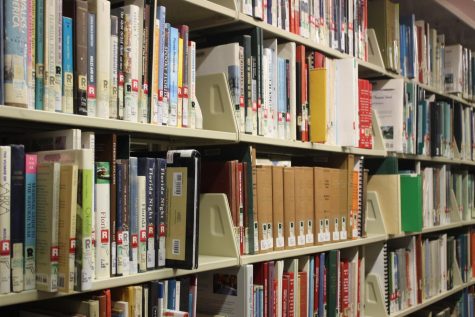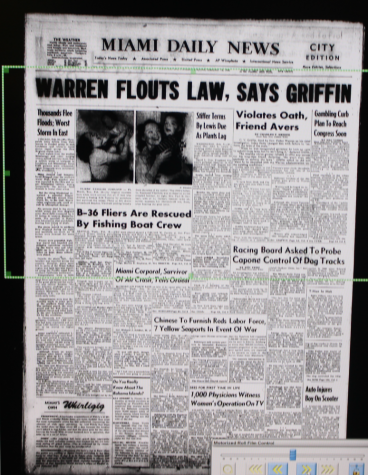Reading Florida’s Past
Old black and white pictures of Miami line the walls of the fused Florida and Genealogy Collection and books and newspapers that have the highest demand are showcased throughout the collection. The collection is available in the main library located in Downtown and is home to one of the biggest achievements in archival work of the Miami-Dade County Library System (MDPLS). The Florida Collection, or otherwise known as the Helen Muir collection, is the library’s newspaper archive on microfilm, consisting of a 35 millimeter film.
 Audrey Weigel / highlights
Audrey Weigel / highlights
The microfilm newspaper archive is widely known as the heart of the collection, but the hidden gems are the older archival artifacts including books, maps and pamphlets about Florida’s history. These include biographies on Floridians, books on nature, the building architecture, sports and politics. The collection has accumulated a wealth of maps and historical resources, becoming a library within a library. Over the past few decades, various authors have donated their work to the collection. The department actively seeks out Florida-themed mediums to add to their continuously expanding collection.
Newspapers such as The Tampa Tribune, The Miami Herald and The Miami News are just a few of those featured in the Floridian Collection. According to librarian Giselle Alonso, the library’s microfilm archival collection on The Miami Herald, now in somewhat of a delicate condition, dates back to 1904, documenting entertainment, obituaries and important historical events when they occurred. When MDPLS receives the digital product from The Miami Herald, the microfilm archive will be replaced. The library also contains the full run of The Miami News, a Pulitzer-winning newspaper that featured a multitude of well-known writers such as Marjory Stoneman Douglas but unfortunately went out of print in 1985. When the collection started in the 1940s, librarians acted as a walking index because a working system had yet to be created. Librarians began keeping a file on things such as clippings from newspapers on specific companies.
“I found it interesting that The Florida Room was organized using the Dewey Decimal system because I learned more about how libraries are organized. The librarians in the department were very useful and I learned things I had never even thought about regarding Florida’s past,” junior Abril Solorzano said. “It was a lovely wealth of information readily available.”
 Audrey Weigel / highlights
Audrey Weigel / highlights
The main focus of the Florida department is Miami. However, within the archives are its coverage of the Cuban Missile Crisis along with the rest of the island’s history due to its proximity to Florida. Although this information is available at university libraries, the main MDPLS library is the only public library that has this collection.
It is convenient that the Florida Room and the Genealogy Department are in the same vicinity, because oftentimes, a person’s handiest tool when researching their genealogy is the obituary section in the newspaper archives. By being able to find the exact year a friend or family member died and what was written about them, research in the Genealogy collection on that person becomes a lot easier and less time consuming.
The Genealogy collection does not limit itself to Florida. Due to the fact that the most recent public digitized census is 1940, all prior records are kept on microfilm. Aside from the microfilm, there are also city directors and old phone directories available for public use. Researching throughout the Genealogy collection has been made easier over time, and now library users are able to access AncestryLibrary at physical MDPLS locations using their library subscriptions.
Both collections are free for the public to view whenever the library is open. The library is open everyday except on Sundays, from 8 a.m. to 6 p.m., except for Thursdays when it is open until 8 p.m.
